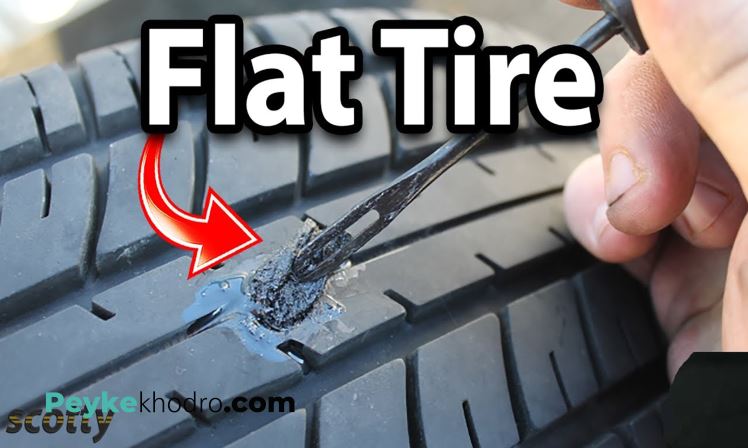Knowing how to change a tire is a necessary skill for all drivers. If you rely on a cell phone to save you in a roadside emergency, there’s always that chance you will forget to charge it, be out of range, or leave it at home. Flat tires can happen anywhere, and a cell phone is no substitute for knowing how to change a flat tire.
Thankfully, changing a tire isn’t all that hard! Just adhere to the following guidelines to be prepared in case you have a flat.
These items should have come with your vehicle:
Jack
Lug wrench
Fully inflated spare tire
Vehicle owner’s manual
If you have misplaced any of these items, or if your car did not come with these items, you should purchase new ones right away. And be sure you’re regularly inflating the spare tire to your vehicle manufacturer’s recommended PSI. You should check the spare’s air pressure every time you check your other tires.
Remember to check pressure every month and before long trips or carrying extra load.
Here are some items that don’t come with your vehicle but that you should stow in your trunk or glove box in case you have to change a flat tire:
Flashlight with working batteries
Rain poncho
Small cut of 2"x6” wood to secure the jack
Gloves
Wheel wedges
As soon as you realize you have a flat tire, do not abruptly brake or turn. Slowly reduce speed and scan your surroundings for a level, straight stretch of road with a wide shoulder. An empty parking lot would be an ideal place. Level ground is good because it will prevent your vehicle from rolling. Also, straight stretches of road are better than curves because oncoming traffic is more likely to see you.
Never attempt to change your tire on a narrow shoulder near oncoming traffic. Keep moving (slowly) until you find a safer spot. While driving on a flat risks ruining your rim, replacing a rim is better than being hit by an inattentive driver.
Make sure to consult your owner’s manual and review their specific steps on how to change a flat tire for your vehicle
Your hazard lights or “flashers” will help other drivers see you on the side of the road. To avoid an accident, turn them on as soon as you realize you need to pull over.
Once stopped, always use the parking brake when preparing to replace a flat tire. This will minimize the possibility of your vehicle rolling.
Wheel wedges go in front of or behind the tires to further ensure the vehicle doesn’t roll while you fix the flat tire. If you’re changing a rear tire, place these in front of the front tires. If your flat tire is at the front, put the wheel wedges behind the rear tires.
Bricks or large stones will work just as well as “real” wheel wedges. Just be sure they’re large enough to stop the car from rolling.
If your vehicle has a hubcap covering the lug nuts, it’s easier to remove the hubcap before lifting the vehicle with the jack.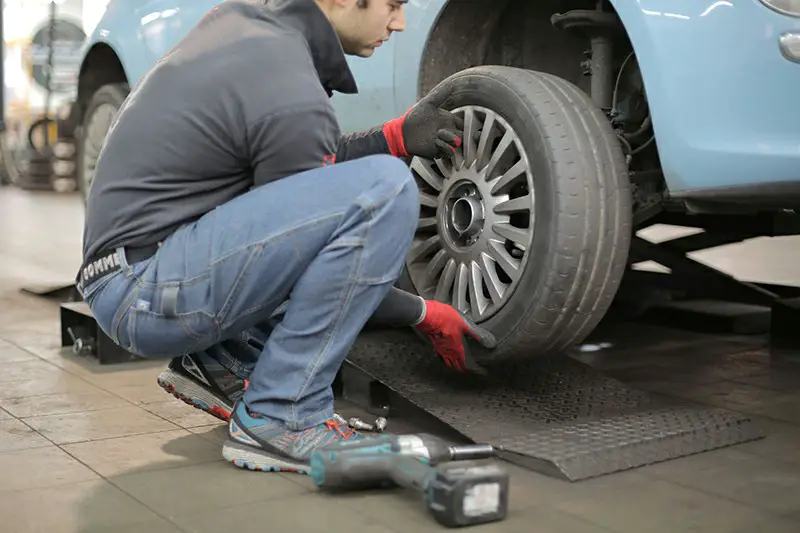 If your lug nuts are exposed, you can skip ahead to Step 6.
If your lug nuts are exposed, you can skip ahead to Step 6.
Use the flat end of your lug wrench to remove the hubcap. This will work for most vehicles, but some hubcaps need a different tool to come off. Consult your owner’s manual for proper hubcap or wheel cover removal procedures.
Using the lug wrench, turn the lug nuts counterclockwise until you break their resistance. You may have to use force, and that’s ok. Use your foot or all of your body weight if necessary.
Loosen the lug nuts about ¼ to ½ of a turn, but don’t remove them completely yet. Save that for when it’s time to remove your tire/wheel from the vehicle.
The right place for the jack is usually beneath the vehicle frame alongside the tire that’s flat. Many vehicle frames have molded plastic on the bottom with a cleared area of exposed metal specifically for the jack. To safely lift and avoid damage to the vehicle, follow the instructions for jack placement in your vehicle owner’s manual.
To prevent the jack from settling under the weight of your vehicle and coming off balance, place a small cut of 2x6” wood beneath it before attempting to raise your vehicle. This tactic is especially helpful on asphalt.
With the jack properly positioned, raise the vehicle until the flat tire is about six inches above the ground.
Never put any part of your body under the vehicle during or after raising the vehicle with the jack.
Now it’s time to remove the lug nuts all the way. Since you've already loosened them, you should be able to unscrew them mostly by hand.
Gripping the tire by the treads, pull it gently toward you until it’s completely free from the hub behind it. Set it on its side so that it doesn’t roll away.
Now place the spare on the hub by lining up the rim with the lug bolts. Push gently until the lug bolts show through the rim.
Put the lug nuts back on the lug bolts and tighten them all the way by hand. Once they are all on, check each one again, tightening as much as possible. You will tighten them with the wrench after lowering the vehicle to the ground.
Use the jack to lower the vehicle so that the spare tire is resting on the ground but the full weight of the vehicle isn’t fully on the tire. At this point, you should tighten the lug nuts with the wrench, turning clockwise, as much as you can. Push down on the lug wrench with the full weight of your body.
Bring the vehicle all the way to the ground and remove the jack. Give the lug nuts another pull with the wrench to ensure they’re as tight as possible.
If the hubcap you took from the flat tire will fit your spare, put it in place the same way you removed it initially. If it doesn’t fit, stow it away with the tire when you stow your equipment.
If it doesn’t fit, stow it away with the tire when you stow your equipment.
You have before you a jack, a lug wrench, wheel wedges, your flat tire, and possibly a hubcap. Don’t forget to put all of them in your vehicle before driving away.
You should check the tire pressure of the spare tire to make sure that it is safe to drive on. “T-Type” temporary spares, also called “mini-spares,” require 60 psi (420 kPa). If the tire needs pressure, drive (slowly) to a service station immediately.
Temporary spare tires aren’t made to drive long distances or at high speeds, so drive cautiously until you’re able to visit a tire technician. A professional should be able to determine whether your tire needs a repair or if it’s time to replace it.
Aside from taking your tire to a professional, the above procedure shouldn’t take more than 15 to 30 minutes to change a tire. Just be sure you don’t leave out any steps.
Just be sure you don’t leave out any steps.
It’s beneficial practice changing a tire in your garage or driveway to ensure you’re ready to handle this situation if it ever happens to you.
Knowing how to fix a flat tire is great, but regular tire maintenance is even more important. In addition to reviewing this guide regularly, remember to do the following:
Keep your tires properly inflated
Rotate your tires according to the manufacturer’s guidelines
Monitor for tread wear
All of these precautions will extend the life of your tires and reduce the likelihood of a flat. While there’s no way to prevent flat tires completely, proper care can improve performance and ensure your tires last as long as possible.
There’s never a good time for a flat. That’s why Bridgestone DriveGuard tires are masterfully engineered to keep you moving for up to 50 miles at speeds up to 50 MPH without disruption.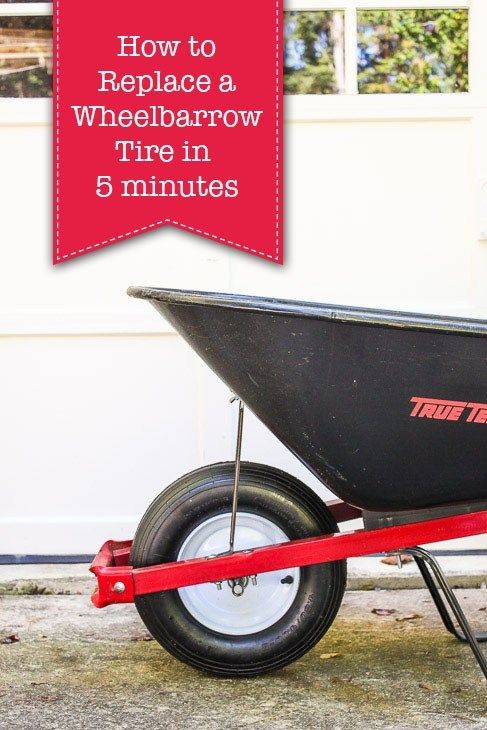
There’s never a good time for a flat. That’s why Bridgestone DriveGuard tires are masterfully engineered to keep you moving for up to 50 miles at speeds up to 50 MPH without disruption.
See Details Find Your Fit
The rear tire in its flattened state. ? Scotty Reiss
Don’t panic. It’s not as awful as you think.Not long ago I got a call from my daughter, one that all moms dread: “Mom, we have a flat tire! What do we do???”
Both my daughters were in the car and they were panicked. They were on the highway and road flotsam slashed the front tire wide open.
Not all flat tires are created equal; some are easy to fix, others can lead to a bad accident. How you handle it is the key to being safe and ensuring it isn’t a horrible experience.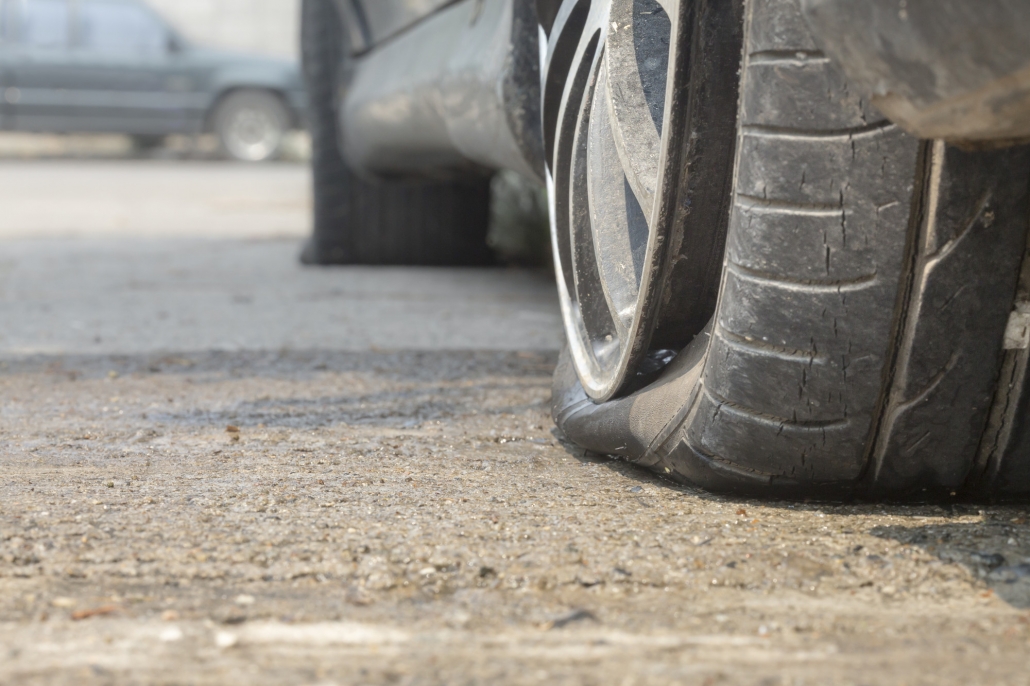
The Lincoln Aviator I was driving when I got a flat tire. ? Scotty Reiss
It’s Not If You’ll get a Flat, but When, so PrepareThe first thing you definitely need to prepare is a plan for roadside assistance. If your car’s warranty doesn’t have a roadside assistance package, there are other options including AAA’s coverage or coverage through your insurance policy.
The other thing that helps is to have a spare tire, though not all cars come with a spare (it saves fuel over the long term and cash up front in the purchase price). Be sure to know if your car has a spare tire or not.
What you don’t need to do is plan to change the tire yourself. While yes, it’s great to know how to change a tire, the reality is that on the side of the road, perhaps in dark or bad weather, changing a tire is a job for a pro. And, many tires are installed with pneumatic tools ensuring lug nuts are super tight. You may need more torque than the gravity of your body weight to get them loose, so even if you know how, you may need the help of a pro.
You may need more torque than the gravity of your body weight to get them loose, so even if you know how, you may need the help of a pro.
The spare tire in its bay under the cargo floor. ? Scotty Reiss
Roadside Assistance Plans Are Great, But Not Created EqualThis is my favorite way to have a flat tire: Dial the number for roadside assistance and then someone comes to fix it.
Most new car warranties include a complimentary roadside assistance plan — with a limited number of years or miles covered, and details of each plan can vary. Generally, they cover the cost of towing to a dealer or repair facility and may cover the cost of swapping your flat for the spare. From there, repairing the tire or getting a new one is on you.
These are great for car dealers because if they tow your car they can service the flat. This lets them step in to sell you any additional necessary services—like replacement tires or wheel repairs—rather than a local garage with a tow truck. The upside is your car is cared for by a dealer who is familiar with what your car needs. The downside is that this can be more expensive.
The upside is your car is cared for by a dealer who is familiar with what your car needs. The downside is that this can be more expensive.
If your car doesn’t have a roadside assistance or the plan has expired, AAA’s plan works in a similar way. Insurance plans vary and can include other benefits like trip interruption reimbursement and coverage for damage to your vehicle, which a manufacturer’s warranty may or may not cover.
The technician working on changing the tire. ? Scotty Reiss
First Things First: How to Know Your Tire is FlatThis might seem obvious but it might not be. In fact, if the tire pressure monitor hadn’t gone off I might not have known I had a flat. I was driving slowly on downtown streets and the car felt pretty normal. Once the TPMS light flashed on the dashboard I was sure I had an issue, but the feeling and sound were only very slight.
If you’re not sure if you’ve had tire damage, slow down, listen and feel for anything unusual while you find a safe place to pull over to inspect your tires.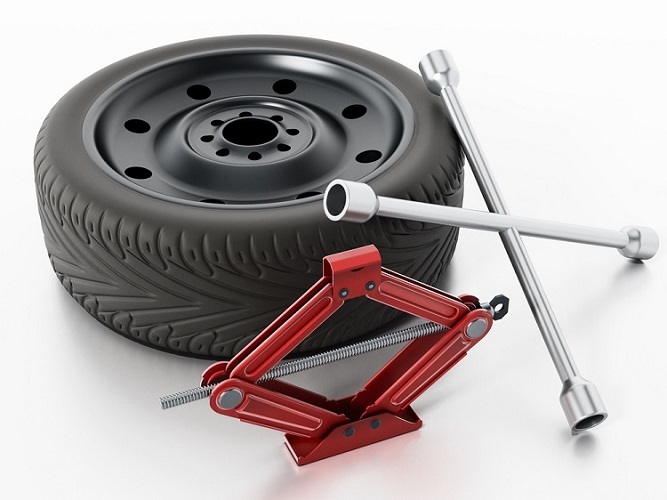
Roadside assistance tire change in progress . ? Scotty Reiss
Slow Down, Maintain Control and Find a Safe Place to ParkIf you think your tire is flat, the first thing to do is to slow down, put your flashers on and pull over to a safe place— ideally off the road or highway. If you can exit the highway, all the better. Don’t drive very far or fast on a flat tire or you risk ruining the tire rims; these cost a lot more to replace than just the tire.
If you’re on the highway—and that is a common place for tire damage to occur—pay close attention to controlling the car. Without a fully functioning tire you can lose all wheel drive capability and other safety functions like lane keep assist and the car can be more difficult to steer.
Text messages from Lincoln’s road side assistance desk kept me apprised of the technician’s arrival time. ? Scotty Reiss
Call Roadside AssistanceOnce you’re in a safe place call for roadside assistance.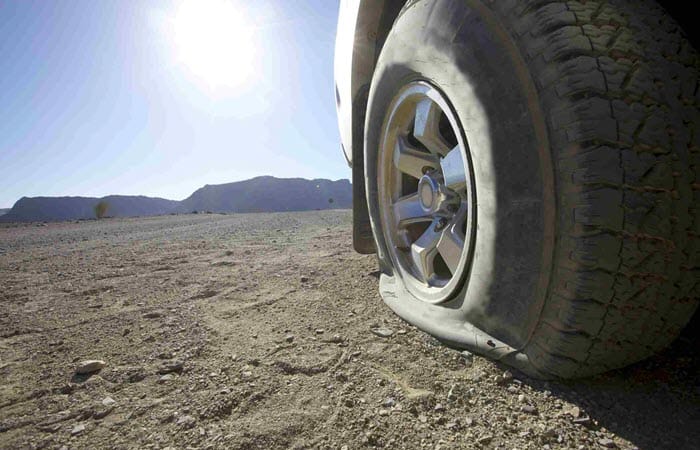 Be sure to keep the number in the car or glovebox or better, in your phone’s contact list. If you don’t have it at hand, you can also search on a smart phone. When my daughters called in a panic I told them the number would be in the information in the glove box. While they looked, I Googled Hyundai’s roadside assistance number and texted it them faster than they could find it in the manual.
Be sure to keep the number in the car or glovebox or better, in your phone’s contact list. If you don’t have it at hand, you can also search on a smart phone. When my daughters called in a panic I told them the number would be in the information in the glove box. While they looked, I Googled Hyundai’s roadside assistance number and texted it them faster than they could find it in the manual.
When I had a flat tire during a week-long test drive in the Lincoln Aviator, I was easily able to find the number for Lincoln’s road side service right inside the manual cover. I called and operators quickly located a repair service and had a repair person quickly dispatched. I waited about 30 minutes for the technician to arrive.
Hyundai’s service took a bit more time since my daughter’s car didn’t have a spare. Her car had to be towed so the operator had to locate a dealership and with an available tow truck.
The technician’s car surprised me a Prius rather than a truck. ? Scotty Reiss
What Happened After I Called Roadside AssistanceAfter I spoke with Lincoln’s roadside assistance operator I got several text messages letting me know the location and estimated time of arrival of the technician.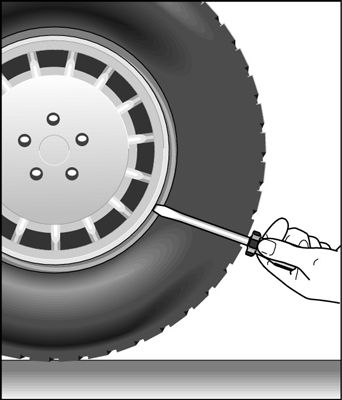 It took him about 30 minutes to get to me, which was fine; I’ve waited longer before. I was lucky to be in a parking lot at a bank during the day; had it been at night I would have stayed in the car with the doors locked and on the phone with my husband.
It took him about 30 minutes to get to me, which was fine; I’ve waited longer before. I was lucky to be in a parking lot at a bank during the day; had it been at night I would have stayed in the car with the doors locked and on the phone with my husband.
Once the technician arrived — I expected a truck but he was driving a Toyota Prius!— he assessed the situation and got to work swapping the tire for the spare. The spare tire is actually a spare wheel and tire; he removed the flat and replaced it with the spare.
Luckily I didn’t have anything in the cargo area of the Aviator; if I had I would have had to move things around both to remove the spare tire and to accommodate the flat. At 22” it takes up a lot of space but it fit in the cargo area with the third row folded flat.
A warning on the spare tire. ? Scotty Reiss
Driving on a Spare Tire — Another Caution to ConsiderJust 15 minutes later and I was on my way. I had about an hour drive on the highway to get home.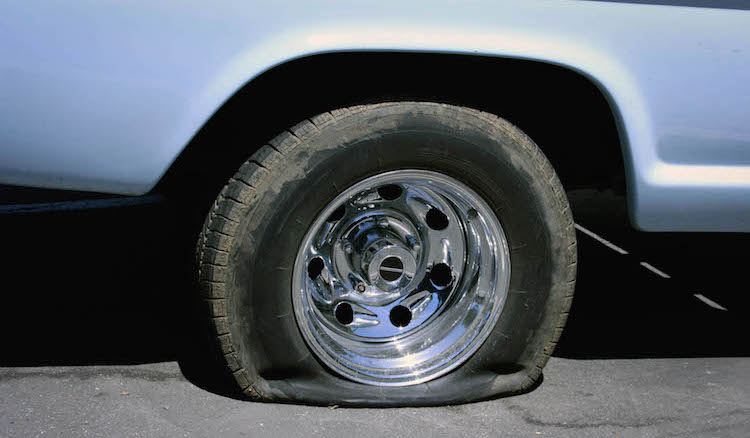 The spare tire can go the distance but not at the same speeds I am used to for highway driving. Spare tires have a suggested speed limit of 50 MPH; I could drive closer to 60 but not much more. If I forgot and drove faster I found the car harder to control.
The spare tire can go the distance but not at the same speeds I am used to for highway driving. Spare tires have a suggested speed limit of 50 MPH; I could drive closer to 60 but not much more. If I forgot and drove faster I found the car harder to control.
And, not all the driver assist features work when the spare tire is in use. I noticed that the all wheel drive, adaptive cruise and lane keep assist functions didn’t work. The system detected the difference in wheel sizes and since this is not as predictable and demands control from the driver, the systems were not available.
Fixing the Problem with New TiresYes, I said tires. Often, when replacing a blown tire you need to think about replacing two tires—the damaged tire and its same-end-of-the-car companion. This will ensure even wear and performance of the tires. And, consider going to your dealer to have the tire or tires replaced. I have heard some owners say the the dealer had to reset car’s computer to ensure the the driver assist and safety features are working properly.
If you’re worried about the added expense of buying tires from a dealer, you can research the tires you need and find the best price, then ask the dealer to match that price or you can buy them on line and have them shipped to the dealer.
And be sure the spare goes back into its bay. So it’s there for you next time … which hopefully, will be never!
Journalist, entrepreneur and mom, Scotty likes to say the automotive business found her, she didn't pursue it. But recognizing the opportunity to give voice to powerful female consumers and create a voice to match their spending power, her mission became to empower women as car buyers and owners. A career-long journalist, she has written for the New York Times, Town & Country, Adweek and co-authored the book Stew Leonard, My Story, a biography of the founder of the iconic grocery company Stew Leonard’s. Her love of cars started when her father insisted she learn to change the oil in her MG Midget, but now it mostly plays out in the many road trips taken with her family.
Home > Knowledge > Contents
Product Categories
Contact Us
Add: No. 2, Chonggong Road Donggang, Fuhai, Cixi, Ningbo, Zhejiang,
MobChina
Phone: +8615988185519
Tel/Fax: + 86-574-56776640
E-mail: [email protected]
When we are driving or driving a car, we may have encountered this situation. During hot summers, the tires will generate heat when the car runs long distances. The air will expand when it gets hot, so we need to put the tires on correctly. Gasoline, then how to put it in if the tire is tied, how to let off the gas as quickly as possible to get the fastest deflation?
1. Locate the tire valve first. It emphasizes a short 2.5-5.1 cm wheel keel tube and has a small cap to cover the inflation hole at the end. Keep dirt and dust out of the valve.
2. Turn the cover counterclockwise to remove it. At this time, a swollen hole was opened. Be careful not to lose this cap, it is easy to forget it in your pocket.
Turn the cover counterclockwise to remove it. At this time, a swollen hole was opened. Be careful not to lose this cap, it is easy to forget it in your pocket.
3. If you have a test tire gauge, you must screw the gauge onto the tire valve and the display will show the tire pressure. Then refer to your normal tire pressure, which should be (instructions will be offered).
4. If you want to deflate the tire, use a screwdriver or nail or something else, metal tweezers (metal pin) in the middle of the top valve. When you apply pressure to the pin, air will flow out of the valve and you will listen. The sound of a buzz. Raise your pressed hand and let the deflation stop.
5. If you want to bleed all the air out of the tires, use a jack to raise the car on the flat side before deflation to avoid damaging the tires and wheel keels. Then blow away.
6. If you want to bleed all the air out of the tires as soon as possible. You can use a valve key to insert the valve, or use long needle nose pliers to turn the metal rod inside the valve counterclockwise. Your tires will lose air at a faster rate. Use this method if you want to deflate quickly.
Your tires will lose air at a faster rate. Use this method if you want to deflate quickly.
 ..
.. related products
Clean tire inflation gun
1.5 Inch Smart Tire Pressure Sensor
Small dial gauge
Presta Valve Bike Tire Gauge
Autozone tire pressure sensor
Steel Economy Dual Scale Pressure Gauge
Sometimes a tire goes flat for no apparent reason. Why does a tire constantly leak air if it is not punctured or damaged? Even tubeless tires can deflate, and it takes time to figure out the cause of the problem.
Running with flat tires results in increased fuel consumption, tire wear and poor vehicle handling.
Let's look at the main reasons why a flat tire can occur.
If a tire puncture occurs on the road, pull off the road and stop on the side of the road, leaving room to work on the wheel.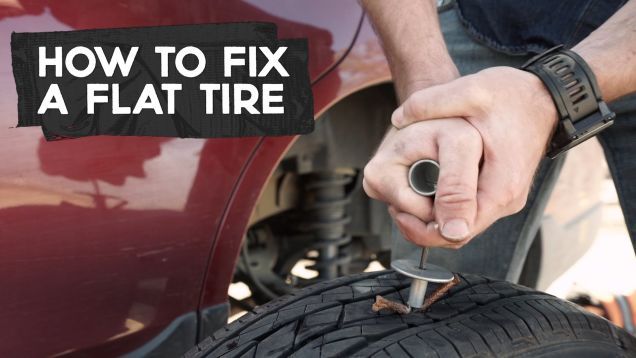 The most obvious option if a flat tire is to put in a spare, but what if you don't have one? In this case, you need to try to pump up the wheel and evaluate the problem. You may be able to drive to the nearest auto repair shop.
The most obvious option if a flat tire is to put in a spare, but what if you don't have one? In this case, you need to try to pump up the wheel and evaluate the problem. You may be able to drive to the nearest auto repair shop.
The easiest way to find a puncture is to pour water on the tire. Characteristic air bubbles will appear at the puncture site. At the same time, it will become clear what caused the puncture. But you can’t immediately get the discovered object, because it closes the hole and does not allow air to escape quickly.
If, on the contrary, there is no foreign object at the puncture site, you can screw a self-tapping screw into it, inflate the tire and try to drive to the nearest tire fitting station.
If you have a tire repair kit with you, you can have your tire repaired on site. To do this, remove the tire from the disk and seal the puncture site with a special rubber gasket.
Another common cause of a flat tire is a cut on the side or tread of the wheel. Side cut occurs when in contact with a curb, metal fittings and other sharp protrusions.
Side cut occurs when in contact with a curb, metal fittings and other sharp protrusions.
If the tire carcass is intact, the tire will not deflate and the repair can be delayed until you arrive at your destination or a tire shop. But a deep cut can lead to a complete deflation of the tire.
Rubber with long cuts affecting the cord (carcass) is replaced with a new one and cannot be restored for safety reasons.
If no punctures or cuts are found during the initial inspection, then another cause of leakage must be sought. One of them may be a defective nipple.
The duty of the nipple (spool) is to keep the pressure in the wheel. If it is faulty, then the pressure in the tire begins to decrease. How to check what exactly poisons the spool? The method is quite simple: just wet your finger and bring it to the hole, if bubbles appear, the reason is found and the spool needs to be replaced.
The second reason is that the nipple is not screwed in properly.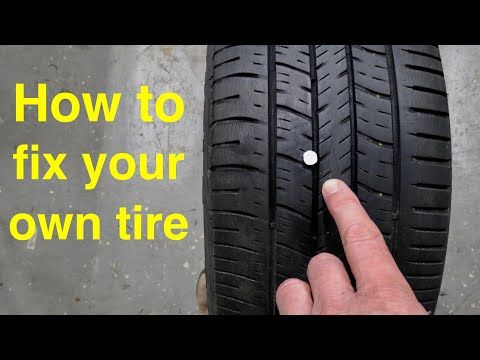 To tighten it, a special key or a cap with a slot on the outer surface will do.
To tighten it, a special key or a cap with a slot on the outer surface will do.
The valve on a tubeless tyre, the nipple, can also cause air to come out of the wheel. Outwardly, it may look good, but if it does not fit well on the disc, then the pressure will certainly drop.
The fitting can bleed air if the rubber is worn or when the air temperature drops. Its size decreases a little, but this is enough for the pressure to drop.
The most common causes of air etching through the disc are two:
If the disc is new, but when installing it, the master poorly smeared it with mastic, then after a while air etching may begin. And if the disk is old and the metal is worn out, then even the mastic will not help, because the tightness of the structure deteriorates due to the deformation of the metal.
Steel wheels are easier and cheaper to repair than cast wheels.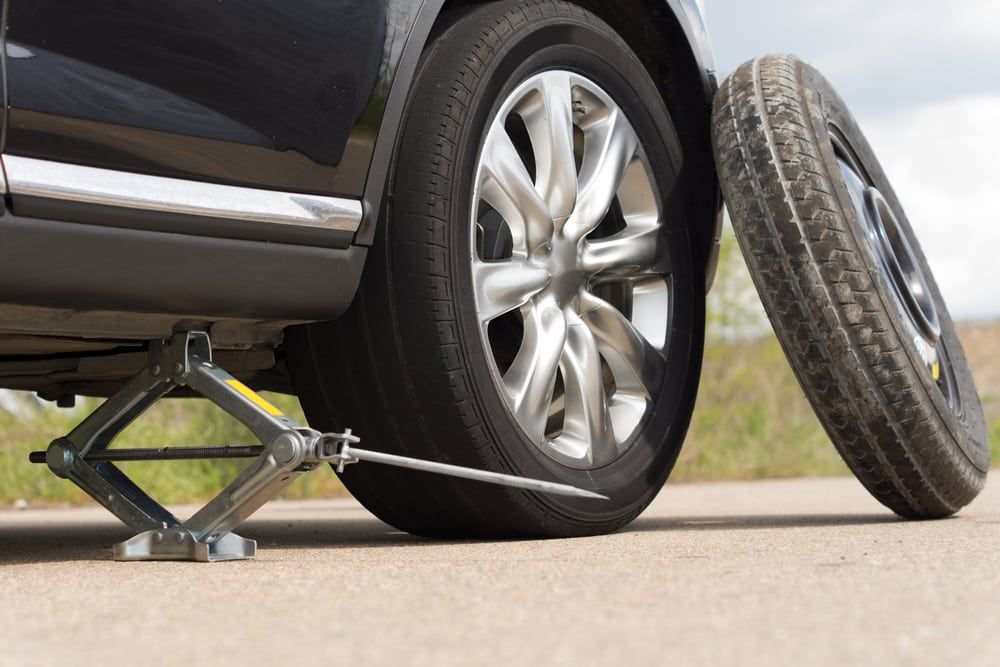 To repair a steel disk, special rolling equipment is used. But after the repair of the cast disk, microcracks still remain, which affect its strength. Therefore, in case of serious damage, it is safer to replace the disk with a new one.
To repair a steel disk, special rolling equipment is used. But after the repair of the cast disk, microcracks still remain, which affect its strength. Therefore, in case of serious damage, it is safer to replace the disk with a new one.
If the wheel is etching on the rim due to corrosion, then you need to clean the wheel from rust and paint, and then coat with sealant for better tightness.
When examining the rubber, a crack can be found. This is indicative of tire wear. But can these tires be used? Each tire is designed for a certain speed, but if it is damaged, the tire can burst from a sudden pressure drop. Usually cracks appear on the side of the wheel, even with a well-preserved tread. If the crack size does not exceed 0.01 mm, then it does not pose a danger. Deeper damage, felt with fingers, can even lead to an explosion of the cylinder. Cracks in the tread are less dangerous because the rubber is thicker there.
Another cause of tire cracking and delamination can be improper seasonal tire storage.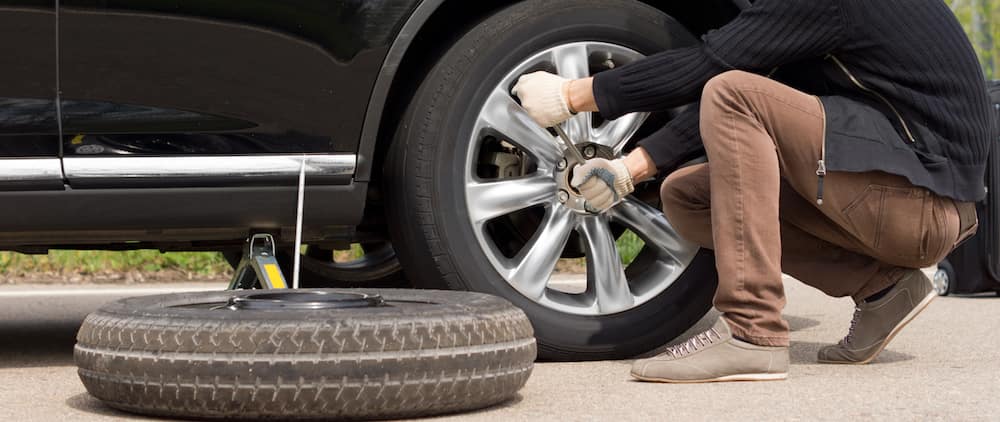 The best storage location is a dark, cool place with low humidity. Wheels can be damaged by dirt, heat, humidity, and sunlight. Before laying in storage, the wheels must be washed, dried and treated with a special compound. It is better to put tires with disks vertically, and without disks - in a pile.
The best storage location is a dark, cool place with low humidity. Wheels can be damaged by dirt, heat, humidity, and sunlight. Before laying in storage, the wheels must be washed, dried and treated with a special compound. It is better to put tires with disks vertically, and without disks - in a pile.
The best places to store tires:
Metal garages, attics and sheds are not suitable places for storage. Under unsuitable conditions, the structure of the rubber is damaged, which shortens the life of the wheels.
Rubber reacts to changes in temperature. Therefore, from time to time it is necessary to pump up tires due to reduced pressure. Tire pressure may be lower in the morning in frost, and higher in the afternoon in thaw. Also, when the car is moving, the tires heat up and the pressure increases.
A few tips to help you avoid unexpected tire problems and the need to urgently seek a tire service:
